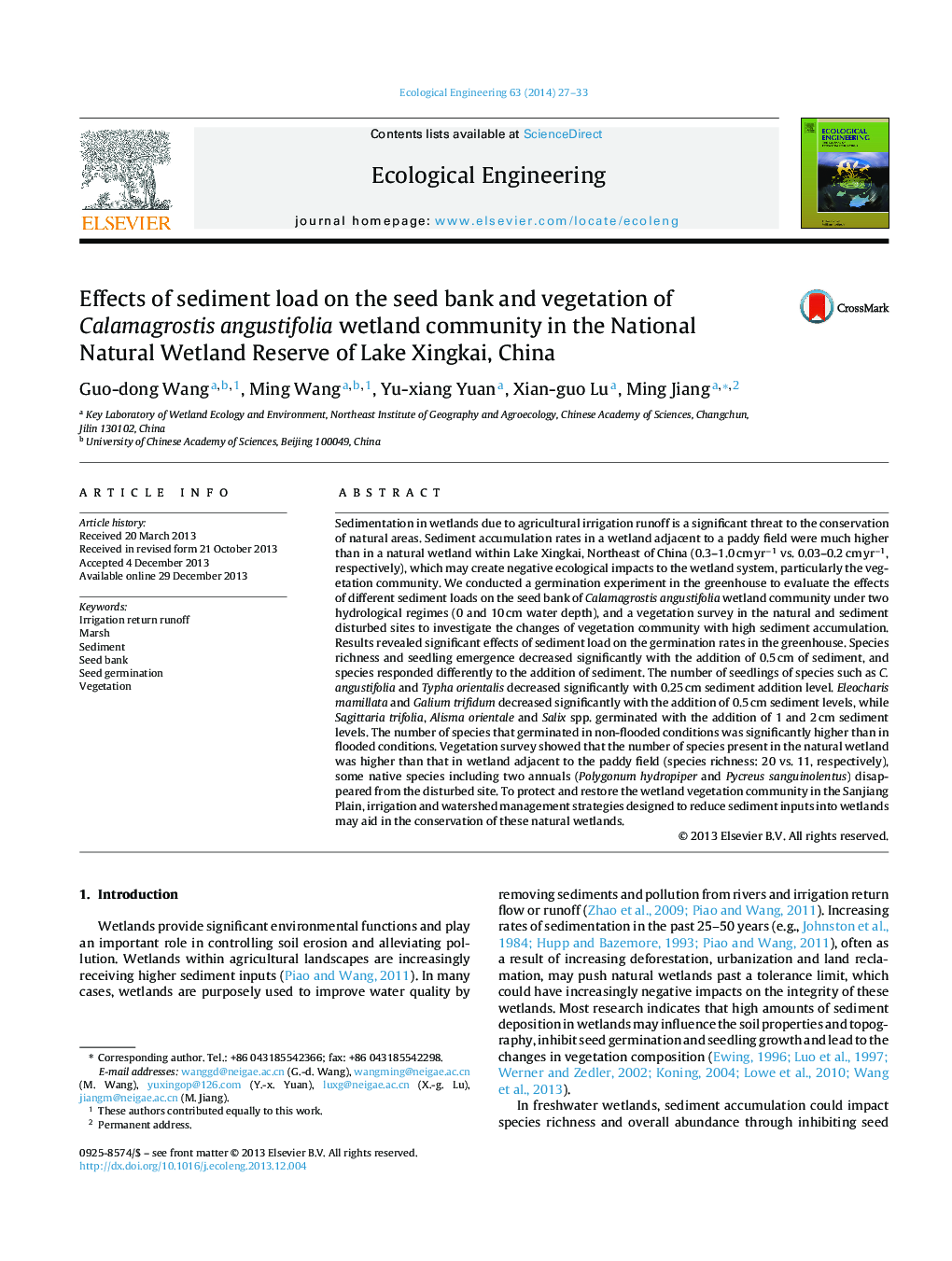| Article ID | Journal | Published Year | Pages | File Type |
|---|---|---|---|---|
| 4389614 | Ecological Engineering | 2014 | 7 Pages |
•Species richness/seedling emergence decreased significantly with sediment addition.•Native species disappeared from sediment disturbed wetland.•Plant species responded differently to the addition of sediment.•Knowledge gained from this study will provide insight into irrigation management.
Sedimentation in wetlands due to agricultural irrigation runoff is a significant threat to the conservation of natural areas. Sediment accumulation rates in a wetland adjacent to a paddy field were much higher than in a natural wetland within Lake Xingkai, Northeast of China (0.3–1.0 cm yr−1 vs. 0.03–0.2 cm yr−1, respectively), which may create negative ecological impacts to the wetland system, particularly the vegetation community. We conducted a germination experiment in the greenhouse to evaluate the effects of different sediment loads on the seed bank of Calamagrostis angustifolia wetland community under two hydrological regimes (0 and 10 cm water depth), and a vegetation survey in the natural and sediment disturbed sites to investigate the changes of vegetation community with high sediment accumulation. Results revealed significant effects of sediment load on the germination rates in the greenhouse. Species richness and seedling emergence decreased significantly with the addition of 0.5 cm of sediment, and species responded differently to the addition of sediment. The number of seedlings of species such as C. angustifolia and Typha orientalis decreased significantly with 0.25 cm sediment addition level. Eleocharis mamillata and Galium trifidum decreased significantly with the addition of 0.5 cm sediment levels, while Sagittaria trifolia, Alisma orientale and Salix spp. germinated with the addition of 1 and 2 cm sediment levels. The number of species that germinated in non-flooded conditions was significantly higher than in flooded conditions. Vegetation survey showed that the number of species present in the natural wetland was higher than that in wetland adjacent to the paddy field (species richness: 20 vs. 11, respectively), some native species including two annuals (Polygonum hydropiper and Pycreus sanguinolentus) disappeared from the disturbed site. To protect and restore the wetland vegetation community in the Sanjiang Plain, irrigation and watershed management strategies designed to reduce sediment inputs into wetlands may aid in the conservation of these natural wetlands.
